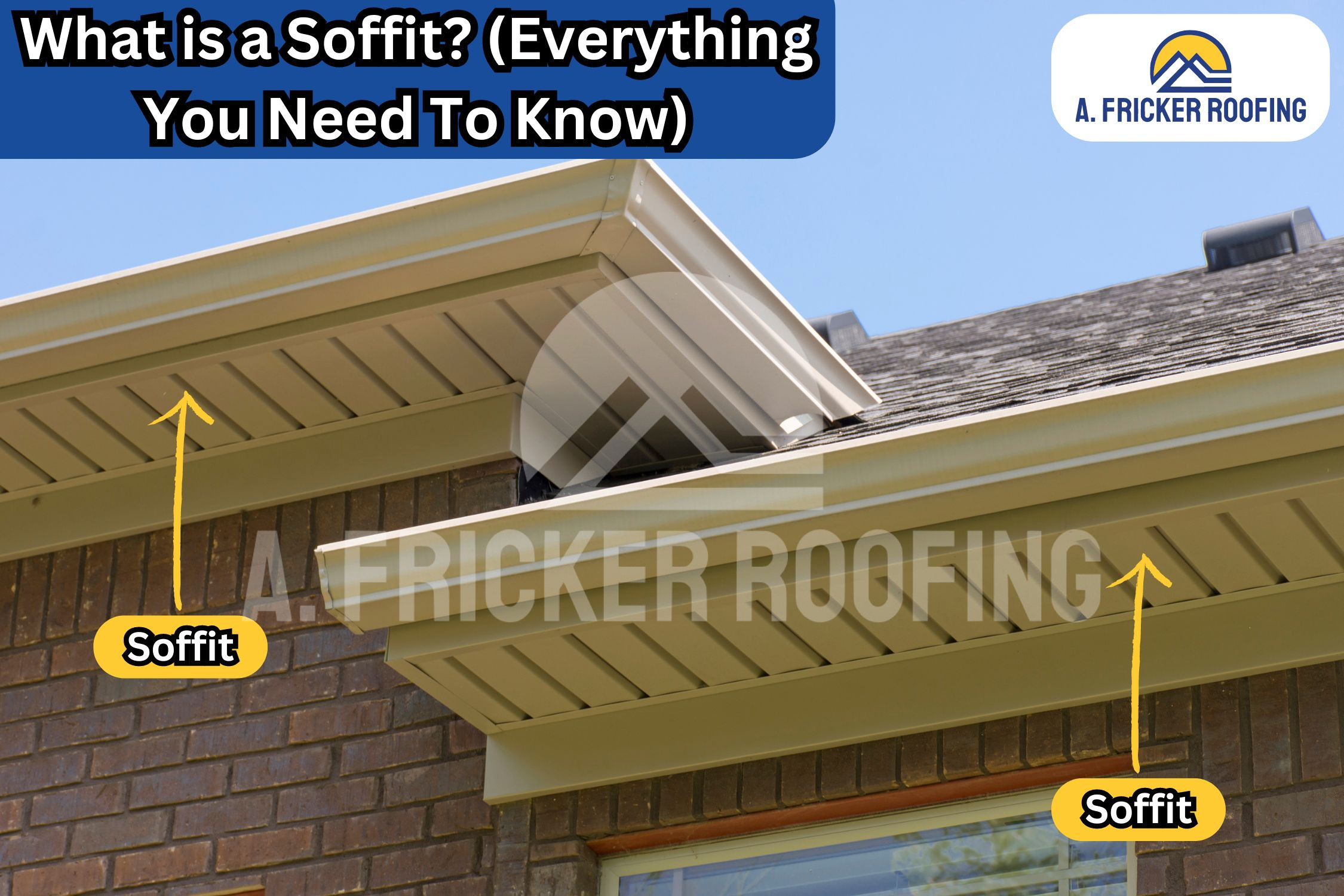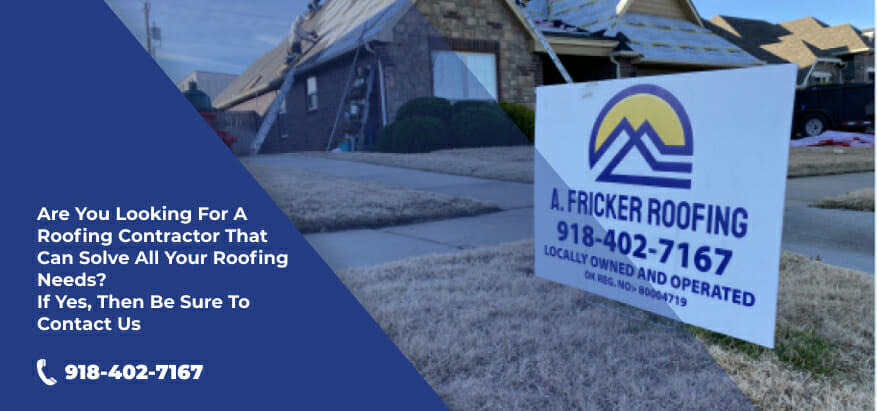Have you ever looked up at the eaves of a house and wondered about the hidden elements that keep everything neat and protected? One such element is the soffit. This is a crucial component of your roof that is often overlooked. Soffits play a vital role in maintaining the aesthetic appeal and structural integrity of a building.
However, we have seen that many homeowners don’t know what soffits are and why they are necessary. Don’t worry, we are here to help.
In this guide, we’ll dive into soffits and explore the following:
- What is a soffit?
- The importance of soffits
- The different types and materials available
- Soffit vs. Fascia
What Is A Soffit?
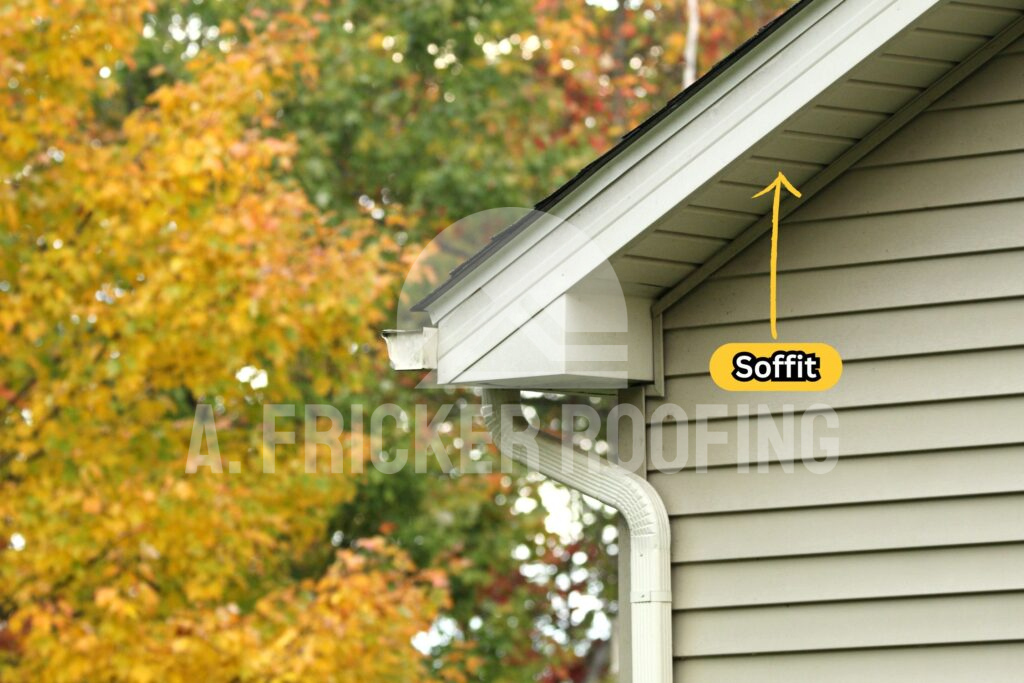
A soffit is a part of the roof’s overhang that is installed under the eaves (the part of the roof extends off your house). It’s the horizontal underside of this overhang, bridging the gap between the siding and the edge of the roof. Soffits are more than just an architectural detail, they are essential for protecting your home from harsh weather conditions and pest infestations. They can be found in both residential and commercial buildings, providing a finished look to the roofline while serving functional purposes.
What Is the Importance of Soffit?
Soffits might seem like minor components of a home’s exterior, but they play significant roles. Here’s why they are essential and why you should take care of them, just like the rest of your home.
Increased Ventilation
One of the primary functions of soffits is to provide ventilation to the attic and roof. Proper airflow prevents moisture from building up in your property. As a homeowner in Oklahoma, you know that rain can be a problem, making your home more vulnerable to moisture damage. This can lead to mold growth and damage to the underlying structure. By allowing air to circulate, soffits help regulate the temperature within the attic and also keep your home cool.
Reduced Cooling Costs
Soffits significantly contribute to lowering cooling expenses by regulating attic temperatures. As they allow cooler air to enter and displace hot air, the overall temperature of the attic space decreases. This reduction in attic heat minimizes the amount of warmth seeping into your living areas, resulting in less strain on your air conditioning system. Consequently, your AC doesn’t need to run as frequently or intensely to maintain comfortable temperatures, leading to noticeable reductions in energy consumption and, ultimately, lower utility bills.
Prevention of Ice Dams
In regions with cold winters, soffits play a crucial role in preventing ice dams. These structures form when heat from the attic melts snow on the roof, which then refreezes at the colder eaves. Proper attic ventilation, facilitated by soffits, helps maintain a consistent roof temperature. This uniform temperature distribution prevents the cycle of melting and refreezing, thereby reducing the likelihood of ice dam formation.
Protection From Pests
Soffits act as a barrier against pests like birds, squirrels, and insects, preventing them from entering your home through the roofline. They also shield the roof rafters from exposure to the elements, reducing the risk of rot and deterioration.
Also Read: How To Get Rid Of Squirrels On Your Roof: A Homeowners Guide
Types of Soffits
Soffits come in various types, each designed to serve specific needs and preferences. The two main types are vented and non-vented soffits.
Vented Soffits

Vented soffits are designed with small holes or perforations that allow air to flow freely into the attic space. These types of soffits are very popular and are used in most homes, especially in Oklahoma’s climate, where high humidity in summer and ice dam formation in winder are common. Vented soffits help maintain a consistent airflow, preventing moisture buildup and keeping the attic dry and in good condition.
They are particularly beneficial for homes with large roof overhangs or complex roof designs where natural ventilation might be limited.
Non-Vented Soffits

Though vented soffits occupy the majority of the homes, non-vented soffits are available too. Non-vented soffits, as the name suggests, do not have openings for air circulation. Now how will they help your home if they don’t offer ventilation?
These are typically used in areas where additional ventilation is unnecessary or where other ventilation systems are in place. Non-vented soffits provide a sleek appearance and are often used for aesthetic purposes. However, these may not be the right option if your area receives heavy rain and snowfall.
Common Materials To Use For Soffits
Soffits can be made from a variety of materials, each offering distinct advantages in terms of durability, appearance, and maintenance. Here are some common materials used for replacing soffits:
Vinyl
Vinyl is a popular choice for soffits due to its affordability, durability, and low maintenance requirements. It is resistant to moisture and rot, making it ideal for homes in wet climates. Vinyl soffit panels come in various colors and styles, allowing homeowners to choose options that complement their home’s exterior. They are easy to install and clean, making them a practical choice for many homeowners.
Wood
Wood soffits offer a classic and natural appearance that many homeowners find appealing. They can be painted or stained to match the home’s exterior and provide a warm, traditional look. Cedar soffit is amongst the best-selling options on the market. However, wood soffits require regular maintenance to protect against moisture, insects, and rot. They are best suited for homes in drier climates or where a specific architectural style is desired.
Aluminum
Aluminum soffits are known for their strength and resistance to corrosion. They are lightweight yet durable, making them a suitable choice for various climates. Aluminum soffits can be painted in different colors, providing versatility in design. They require minimal maintenance and are often used in modern or contemporary home designs.
Fiber Cement
Fiber cement or James Hardie soffits are a composite material made from a blend of cement, sand, and cellulose fibers. They are highly durable and resistant to rot, pests, and fire. Fiber cement soffits can mimic the appearance of wood, offering a natural look without maintenance concerns. They are an excellent option for homeowners seeking a durable, long-lasting solution.
Which Material Should I Choose For My Home?
All these materials have their distinct pros and cons. To select the right material, it is important to assess the style of your home and the weather conditions in your area.
Soffit vs. Fascia
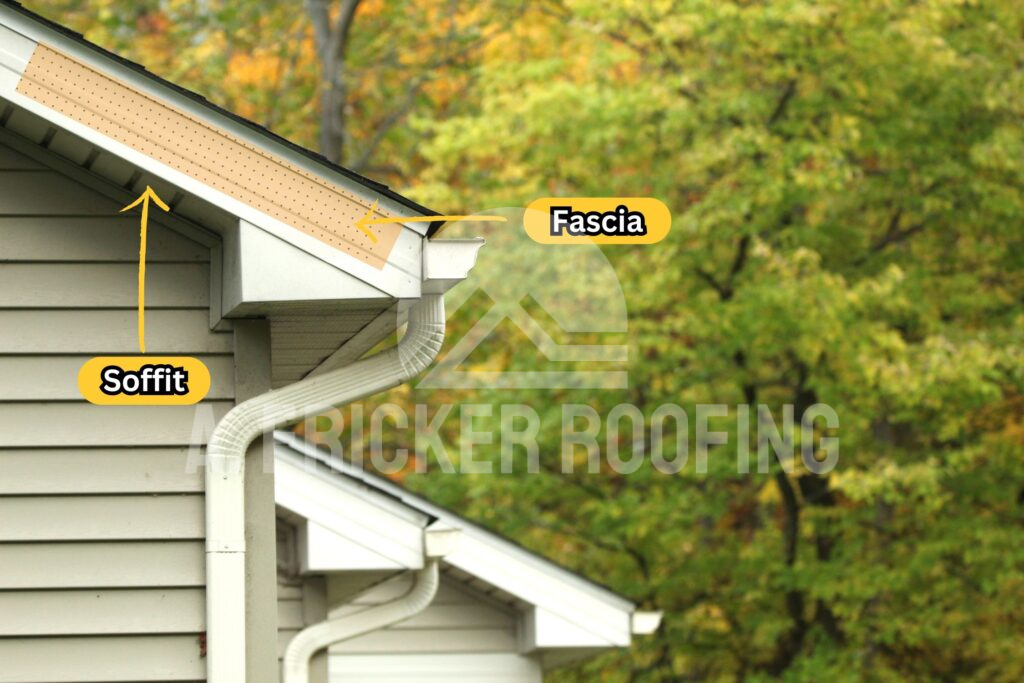
Now that we have covered what attic soffit vents are and their pros and cons, it is time to compare them with another crucial part of your extended roofing system: fascia boards. While soffits and fascia are often mentioned together, they serve different purposes in a home’s roofing system.
- Soffit: As discussed, the soffit is the underside of the roof’s overhang. It provides ventilation, protection, and aesthetic appeal.
- Fascia: The fascia is a vertical board that runs along the roof’s edge, covering the ends of the roof rafters. It supports the gutter system and helps protect the roof and interior from water damage. Fascia boards also contribute to the home’s appearance by providing a clean, finished edge to the roofline.
In essence, while soffits focus on ventilation and protection from below, fascia focuses on providing a stable structure for gutters and protecting the roof’s edge.
Read Also: Soffit vs. Fascia: What’s the Difference?
Best Soffit Colors In 2024
Choosing the right soffit color can significantly impact your home’s exterior design. Soffit colors range from neutrals like white, gray, and beige to more vibrant hues like blue or green. The key is to select a color that complements your home’s existing color palette and architectural style.
Here are some of the best options:
White Soffits: White is a classic choice that offers a clean, fresh look. It works well with almost any exterior color scheme and provides a bright contrast against darker roofs and siding.
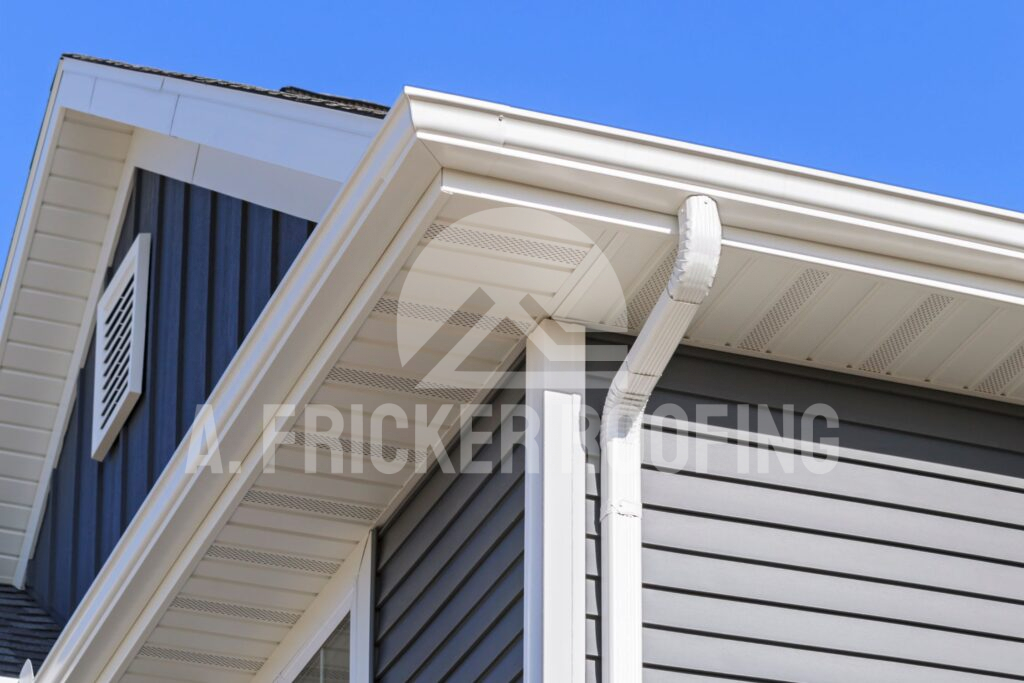
Gray Soffits: Gray soffits provide a modern, sophisticated appearance. They pair well with contemporary home designs and neutral color palettes.
Beige or Tan Soffits: These colors offer a warm, inviting look that complements earthy tones and natural materials.
Bold Colors: For homeowners looking to make a statement, bold soffit colors like deep blue or forest green are also a good option. However, before installing them, ensure they will add value to your property and not look out of place.
Soffit and Fascia Color Combinations
Now that we are into aesthetics, let’s delve into some of the best soffit and fascia color combinations that can improve the curb appeal of your home. Here are some popular combinations:
- Contrasting Combination: White soffit and black fascia
- Cohesive Combination: Gray soffit and white fascia
- Mix And Match Combination: Wood-toned soffit and dark brown fascia
- Exact Match: Using the same soffit and fascia colors
Best Roofing Services In Oklahoma
Soffits might be a small component of your home’s exterior, but they play a crucial role in protecting and enhancing your home’s appearance. Understanding the different types, materials, and color options can help you make informed decisions when choosing soffits for your home.
Whether you have problems with your soffits, fascia board, or any other roofing component, we can help. A. Fricker Roofing and Waterproofing is a premier roofing company serving Broken Arrow, Tulsa, and surrounding areas of Oklahoma. Contact us today at (918) 402-7167 and let us handle your roofing project.
